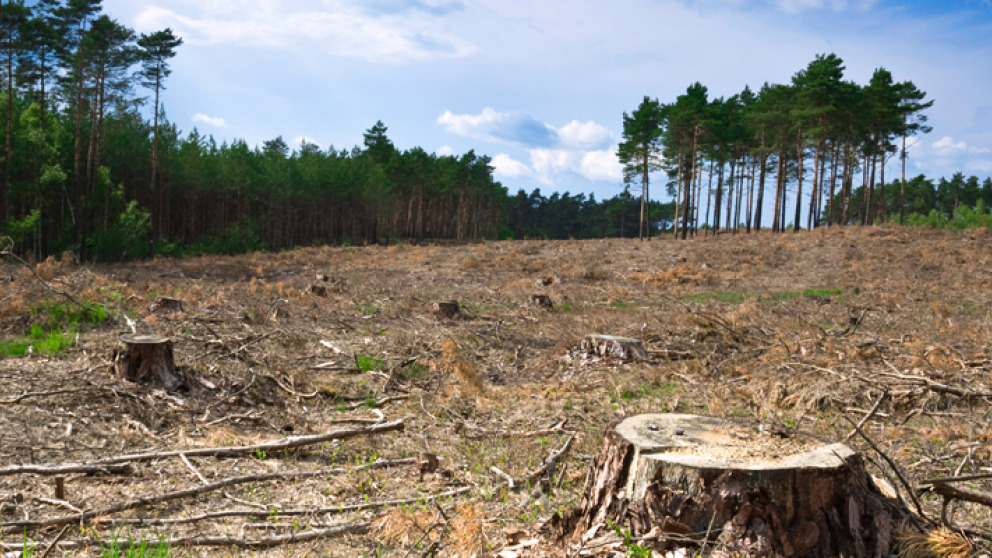Are the Sustainable Development Goals Sustainable?
16.03.2015

2015 is going to be a pivotal year for sustainable development: a global climate agreement is due to be negotiated in Paris in December; under Germany’s presidency, the G7 Summit in June will address sustainable economic growth; and the 193 UN Member States will gather in New York in September to agree on a set of Sustainable Development Goals (SDGs), thereby setting the course for the global Post-2015 Agenda. Negotiations are currently under way on 17 SDGs and 169 targets to replace the Millennium Development Goals. These goals are intended to apply to all countries and encompass three dimensions of sustainability: the ecology, the economy and the social dimension. They will also include a mechanism for monitoring, review and accountability.
Biomass Plays a Pivotal Role in the Sustainable Development Goals
But just how sustainable are the Sustainable Development Goals? A new IASS Working Paper, which is currently being finalised, attempts to answer this question, taking the example of biomass and its role in the SDGs. Biomass fulfils many different functions, the most important being the production of food and animal feed, which accounts for around 82 per cent of the biomass produced globally every year. Increasingly, however, biomass is also being used to produce energy (e.g. biofuels) and biomaterials, which are used in the paper and chemical industries. In Germany, for example, around 15 per cent of all farmland is currently being used to grow plants for energy or industrial purposes. At the same time, biomass is an important carbon sink and helps in this way to combat climate change.
Many of the proposed SDGs can only be achieved with the help of biomass. For example, the elimination of hunger and malnutrition, an increase in the agricultural productivity of small farmers, and sustainable farming are central to Goal 2. Goal 7 foresees a doubling of the share of renewables in the global energy mix by 2030, and Goal 12 urges sustainable production and consumption patterns.
Can Biomass Production Be Increased in a Sustainable Manner?
These Goals make an increase biomass production essential. The Food and Agriculture Organization of the United Nations (FAO) estimates that global food and feed production needs to increase by 70 per cent by the year 2050 in order to feed the world’s rapidly growing population. The International Energy Agency is forecasting a trebling of biofuel consumption by 2040, and a study by Hoogwijk et al. (2003) expects a sharp increase in the use of wood-based products.
But are farmers in a position to meet this increased demand? What impact would this have on natural resources such as soils and land, and how could it be compatible with the three dimensions of sustainability – economic efficiency, social equity, and ecological protection? The FAO claims that increasing demand can be covered to a large extent by higher yields. It also emphasises the importance of wasting less food by preventing post-harvest losses and changing consumer habits. Together with higher yields, innovative ways of using agricultural residues will also play a role in producing energy from biomass. Here too, consumption needs to become more efficient.
Struggle to Secure Land for Biomass Production Can Have Negative Repercussions
Higher yields and more efficient use of biomass will not, however, be enough to meet growing demand. That means that production will have to spread to other areas. Estimates of just how much additional land needs to be brought under agriculture vary widely, ranging from 123 to 300 million hectares. By comparison: the Federal Republic of Germany has a total area of 35.7 million hectares. The UN believes that in particular pastureland, savannah and forests – all of which fulfil important functions in our ecosystem – will have to make way for biomass.
The struggle to secure land for biomass production for foodstuffs, energy and materials can have negative social, economic and ecological repercussions, all of which are discussed in depth in the draft IASS Working Paper. Often it’s the people who work or own the land in question that suffer from the expansion of agricultural land. In countries where tenure rights are not respected, indigenous or disadvantaged sections of the population are sometimes driven illegally from their land. Food price instability can increase, and changes in how land is used can result in the degradation of natural resources such as soils. Cutting down forests can also increase carbon emissions.
SDGs Have to Keep the Big Picture in Mind
So if we don’t approach the various SDGs in an integrated way, conflicting aims may impact adversely on natural resources and the three dimensions of sustainability. Biomass lends itself to illustrating the consequences of such conflicting aims. Sound mechanisms for monitoring, review and accountability will be necessary to avoid them.
I invite readers to comment on our Draft IASS Working Paper on the role of biomass in the SDGs. Many thanks!
Photo: istock/xxmmxx
